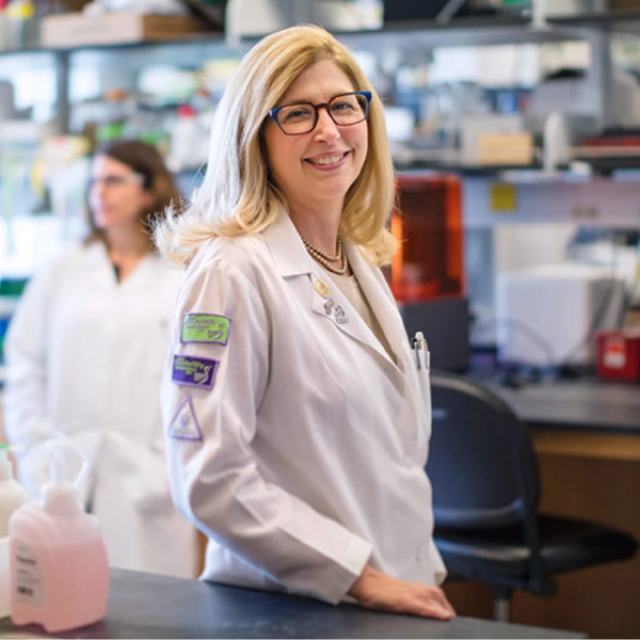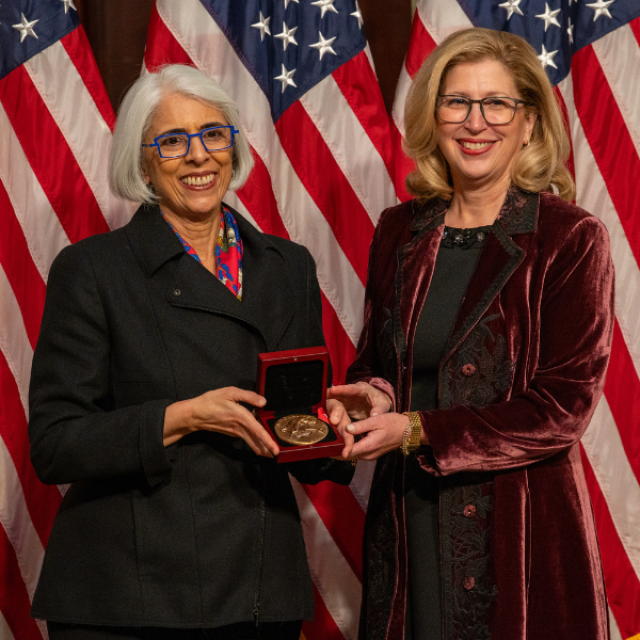Michigan State University Research Foundation Professor Teresa K. Woodruff is the 2025 recipient of the Carl G. Hartman Award from the Society for the Study of Reproduction. Woodruff, PhD, an internationally respected expert in the field of ovarian biology and reproductive science, will receive the award in Washington D.C. at the society’s annual meeting in late…
Teresa K. Woodruff joined an elite group of Americans who have received two national medals of honor when President Joe Biden announced the latest recipients of the National Medal of Science on Jan. 3.
Original Article
WBEZ asks Teresa Woodruff why so many prescription drugs were tested only on men for so many decades, what that’s meant for women’s health, and what’s changed, and much more.
Artificial devices mimicked the female reproductive system. A modular microfluidic device replicated the menstrual cycle and an artificial ovary restored fertility in mice.
The goal is to house patients’ follicles in a specially designed tissue matrix and reinsert them after treatment.
Artificial devices mimicked the female reproductive system. A modular microfluidic device replicated the menstrual cycle and an artificial ovary restored fertility in mice
Equal but biologically different. It starts in the laboratory with male cells under the microscope. Traditionally, animal studies have relied mostly on male mice or other creatures. For decades, in human clinical trials focused on diseases, drug safety and treatment effectiveness, women were often excluded or heavily outnumbered.
Northwestern University’s medical school has launched a website featuring animated characters Olivia the Ovary and Timothy the Testis to teach reproductive health to children.
The high rate of failure during drug development is well-known, however recent advances in tissue engineering and microfabrication have contributed to the development of microphysiological systems (MPS), or ‘organs-on-chips’ that recapitulate the function of human organs.
Bioactive tissue paper made from organs is pliable enough to fold into origami structures
Doctors prescribe medicines and treatments around the world without a concrete understanding of the potentially adverse side effects on women and their menstrual cycles. But a team of scientists in Chicago may have created a solution to understanding how certain drugs can impact the female period.
Researchers have completed the first laboratory model of the human female reproductive cycle
The female menstrual cycle is a rite of passage into womanhood that for centuries has been shrouded in mystery and taboo. Pliny The Elder, for one, believed that menstrual blood could turn crop fields barren. Just last century, one scientist floated a theory that menstrual blood contained a poison that caused women to turn wine into…
Mimicking biological processes in the lab is becoming more common as the development of “organ-on-a-chip” technology intensifies. Now for the first time ever, researchers have managed to replicate the 28-day menstrual cycle of the human female reproductive tract in a dish.
Northwestern Medicine has developed a miniature female reproductive tract that fits in the palm of your hand and could eventually change the future of research and treatment of diseases in women's reproductive organs.
The list of things that can be created with 3-D printers keeps getting longer: jewelry, art, guns, food, medical devices and, now, mouse ovaries.
Hicieron pruebas en ratones, que lograron tener crías; la mirada de un especialista consultado por LA NACION
An all-female team of researchers has managed to use a 3-D printer to create a fully functioning prosthetic ovary in mice.
The ovary substitutes may one day help treat infertility in humans
A team of researchers has taken the next step in regenerative medicine, creating the first 3D-printed ovaries, using gelatin as the printer’s “ink.”
Scientists announced they had 3D-printed prosthetic ovaries that enabled mice — whose natural ovaries had been surgically removed — to ovulate, give birth and nurse.
Three-dimensional printing has been used to create mouse ovaries made of gelatin, able to ovulate and produce eggs that can be fertilized and carried to full term.



